#shermer high
Explore tagged Tumblr posts
Text



The Breakfast Club (1985)
#1985#gif#film#movie#dance#The Breakfast Club#John Hughes#Judd Nelson#John Bender#Ally Sheedy#Allison Reynolds#Anthony Michael Hall#Brian Johnson#Emilio Estevez#Andrew Clark#Molly Ringwald#Claire Standish#Paul Gleason#Richard Vernon#Shermer High School#Shermer#Illinois#Karla DeVito#We Are Not Alone
273 notes
·
View notes
Text

202 notes
·
View notes
Text
The Breakfast Club-Megalist
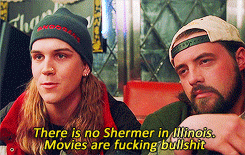
Supernatural activity at Shermer High
Explicit, Supernatural/TBC Crossover: werewolf case for backstory, Sam and Dean adopt a dickhead teenager, HIV+ character, happy ending but drama rollarcoaster till then, sex worker!Bender, mentions of torture/abuse, mentions SA, wincest, destiel, mark of Cain!Dean, fallen angel!cas
Locked in a vacancy
Explicit, UA: Bendew Romance, Never Have I Ever, truth or dare, minor angst, blow jobs, first kiss, just about everyone is bi
Did I stutter?
Explicit, Canon Divergence-Bendrew Romance, first time, non brother wincest, tattooed!Dean, tattooed!Bender, tattooed!Sam, angst, sex, smut, blow Jobs, bottom!Bender, Top!Andrew, Self Harm, Cutting, Blood tw, Queer as Folk inspired
You couldn't ignore me if you tried
Explicit: Sequel fic to Did I stutter, Prom, homophobia, homobphic violence, rescue, big brothers Sam and Dean, love, romance,
Monday morning
Explicit, Bendrew romance, first kiss, bisexual Bender, Virgin!Andrew, Verse!Bender, enemies to friends to lovers, hurt/comfort
#the breakfast club megalist#the breakfast club#bendrew#supernatural activity at shermer high#locked in a vacancy#did i stutter#you couldn't ignore me if you tried#monday morning#john bender#andrew clark#judd nelson#emilio estevez#allison reynolds#brian johnson#claire standish#sam winchester#dean winchester#castiel#wincest#wincestiel#find me on ao3#sunwarmed ash#i post new stuff every sunday#sinful sunday#links in pinned
13 notes
·
View notes
Text

Save Ferris t-shirt. Buy here:
#shirt#save ferris#ferris bueller's day off#ferris beuller#Shermer High School#john hughes#chicago#comedy movies#movies#cameron frye#Ed Rooney#tee#t shirt
2 notes
·
View notes
Text


リサ役のケリー・ルブロック
人形に電極を接続し、さらなる電力を得るために政府のコンピュータ システムをハッキングした後、電力サージにより、無限の魔法の力を持つ美しく知的な女性、リサが誕生します。 すぐに、彼女はピンクの 1959 年型キャデラック エルドラド コンバーチブルを思い出し、少年たちをシカゴのダイブバーに連れて行きます。その力を使って人々を操作し、ゲイリーとワイアットが成人したと信じ込ませます。
彼らは酔って家に帰り、ワイアットの意地悪な兄であるチェットに遭遇し、沈黙を買うために彼から金を巻き上げます。 リサは自分を隠しておくことに同意しますが、ゲイリーとワイアットはとても優しい一方で、非常に堅苦しく、リラックスする必要があることに気づきました。 モールでマックスとイアンが群衆の前でゲイリーとワイアットにアイスを浴びせるという屈辱的な経験をした後、リサはいじめっ子たちにワイアットの家でのパーティーのことを話すが、ワイアットはそれについて全く知らなかったので、ポルシェ928で走り去る。 彼女はゲイリーのために召喚した。
#Weird Science#Kelly LeBrock#Lisa#Nike#Sexy#Shermer H.S.#Shermer High School#Movie#Film#Curly Hair#Full Lips
6 notes
·
View notes
Photo
Happy 39th Anniversary of the day five kids from different cliques attended their infamous Saturday detention to those who celebrate!



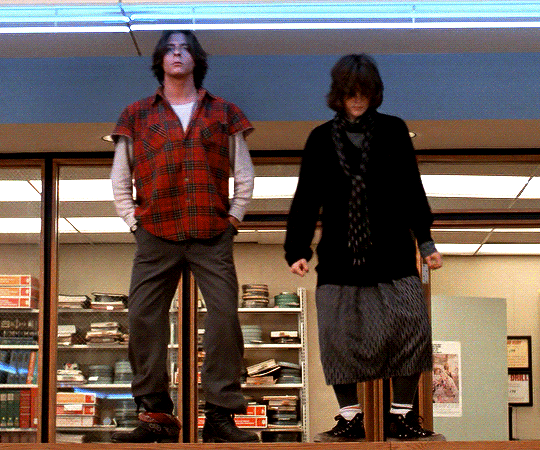

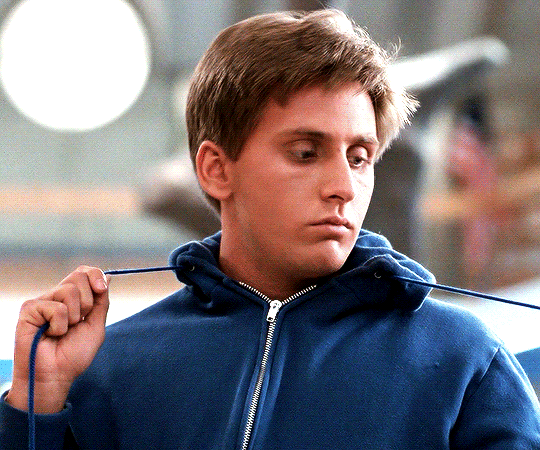


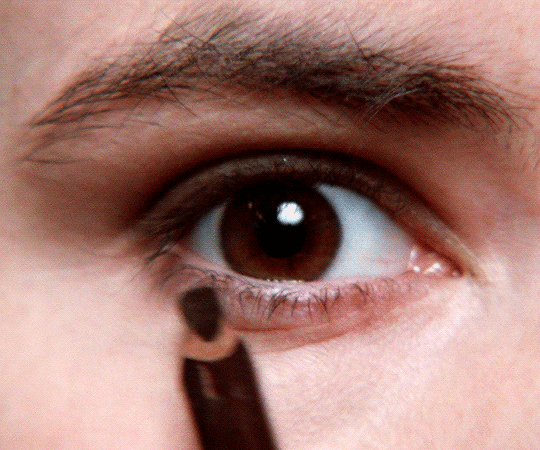
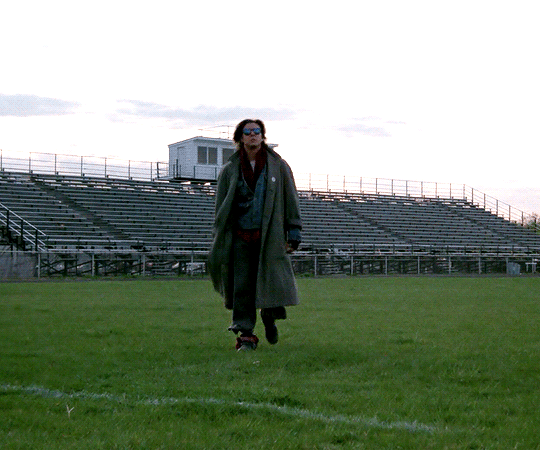
“Dear Mr. Vernon, we accept the fact that we had to sacrifice a whole Saturday in detention for whatever it was we did wrong. But we think you’re crazy to make us write an essay telling you who we think we are. You see us as you want to see us - in the simplest terms, in the most convenient definitions. But what we found out is that each one of us is a brain, and an athlete, and a basket case, a princess, and a criminal.Does that answer your question? Sincerely yours, the Breakfast Club.”
THE BREAKFAST CLUB (1985) - dir. John Hughes
#saturday march 24th 1984#shermer high school#shermer illinois 60062#yes this is a holiday for me#and I will celebrate it as such
4K notes
·
View notes
Text

On March 24, 1984, five students at Shermer High School in Shermer, Illinois reported to the library for detention.
1K notes
·
View notes
Note
Johnny boyyy!(bender)
THAT, my friend, is a FANTASTIC idea :D I like the way you think -3- So! Not really knowing what to write, I went to Pinterest for one of them Person A Person B prompts. I'll link the one I used. This is the one I used :D
Living in the Moment: John Bender x Reader
Pronouns for reader: She/Her
Relationship type: Platonic to Romantic, Friends to Lovers
General Idea: John and Y/N have been friends for years now. A duo of chaos, dare I say. The two once again get themselves into detention. But what happens when feigning a nap Y/N hears something she wasn't meant to hear?
Content Warnings: Drugs (It's a Breakfast Club fic... it's kinda in the terms and conditions), Bender being soft, swearing, (Y/N) doesn't hate Claire (that's a recurring theme in these fics for some reason. I actually really like Claire)

(Nobody's POV)
"We pretty much asked for this detention served to us on a silver platter." (Y/N) says, hands in her pockets as she walks to Shermer High School. She turns her head to her friend, John Bender, who was walking beside her.
"It's worth it though." He says, fishing around in his pocket for his sunglasses. It wasn't sunny out at all, he literally only ever wore them to piss off Vernon. He takes another pair out of one of his coat pockets and put them on (Y/N)'s head. He flicks them so they slide onto her face, causing her to laugh.
"John!" She laughs in mock offence, taking bits of her hair out from behind the sunglasses. The two walk into the library and sit down next to each other, their movements pretty much in sync. A few people were also in detention. People (Y/N) recognized as Brian Johnson; a nerd she had physics with, Claire Standish; a girl who (Y/N) had respect for but never bothered to talk to, Andrew Clark; an kid on the wrestling team who was similar to Claire in (Y/N)'s eyes, and Allison Reynolds; someone (Y/N) had talked to a few times... but never had a real conversation with.
Vernon walks in and stands, just looking at the mini crowd of teens in the library. His eyes set on (Y/N) sitting next to Bender and laughs humorlessly. "On your feet (L/N), you're sitting somewhere else."
"I can sit where I want." She retorts, folding her arms over her chest. "It's a free country." Vernon yanks her out of her seat and she starts to sit at the desk behind John, to which Vernon snaps.
"Next to her." He points towards Allison, who snaps her head up instantly. (Y/N) does as she's told, but devises a plan to reunite with her friend once the dictator leaves.
"Well... here we are. I want to congradulate you for being on time." Vernon says, his tone of voice being slightly degrading.
"Excuse me, sir?" Claire raises her hand. "I think there's been a mistake. But, um... I don't think I belong here." John and (Y/N) exchange a look that says "Oh dear God" . Vernon is unfazed by this.
Vernon goes on to talk about how everyone has pretty much 9 hours to be in here and that we have to do a 1000 word essay on who we think we are. When Vernon leaves, (Y/N) scoots herself right back to her original spot. A few hours goes by; John bullies Claire and Andrew, Allison draws and using her dandruff as a art utensil, and Brian was.... well Brian did whatever Brian does.
Once hour 2 hit, all (Y/N) wanted to do was sleep. She layed her head on the table and she drifted off to sleep.
.·:¨༺ ༻¨:·
(Y/N) feels herself drift back into consciousness, but keeps her eyes closed. "You're really pretty." She hears the breathy whisper of Bender. It's almost completely silent, and she probably wouldn't have caught it if she wasn't hyper-aware of his voice. "God I love you..." He whispers. She feels his fingers brush some hair out of her face, then it's silenced again.
"WAKE UP!" The cold voice of Vernon shoots (Y/N) up and almost 10 feet out of her seat. "(L/N) didn't I tell you to sit somewhere else?" (Y/N) looks around and points to herself innocently.
"Who, me?" She says, playing dumb. "I don't think so, sir." John and Andrew snicker at her antics.
"Don't play dumb with me, girl." Vernon threatens.
"I'm not, Dick. Can I call ya Dick?" She says, smiling innocently. Vernon doesn't have time to respond before (Y/N) continues. "Why would I play dumb anyways? I'm a smart girl with potential. Now Miss Standish here." She starts, gesturing towards Claire. The redhead whirls right around and makes a nasty face towards (Y/N). (Y/N) ignores it and continues her shenanigans. "She would play dumb to get what she wants, it's written all over her face!"
Vernon doesn't respond, but instead just says: "Alright girls, that's 30 minutes for lunch."
"Here?" Andrew asks.
"Here." Vernon says, firm in choice.
"Well," Andrew starts. "I think that the cafeteria is a more suitable place to eat lunch in, sir."
"Well I don't care WHAT you think, Andrew." Vernon starts. John gets a sparkle in his eyes and opens his mouth to speak. (Y/N) leans back, ready for what was about to go down.
"Uh, Dick?" John says. "Excuse me, Rich... Will MILK be made available to us?"
"We're extremely thirsty, sir." Andrew piggybacks off of John.
"I have a very low tolerance for dehydration." Claire says.
"I've seen her dehydrated, sir." Andrew says, nodding. "It's pretty gross."
After a whole scenario and a half, everyone has a coke and a lunch. Everyone eats together, John and (Y/N) being without meals. "Ya wanna do something stupid?" John whispers to his friend, his breath tickling (Y/N)'s face.
"Oh always, Dear." She says dramatically. The two start to stand up and walk out of the library.
"H-hey, we aren't supposed to do that." Brian starts.
"Relax, Peewee." John says. "We're just going to my locker. Nothin' special."
"Why? You got drugs in there or something?" Andrew asks condescendingly. (Y/N) giggles.
"Something like that."
.·:¨༺ ༻¨:·
John, (Y/N), Brian, and Claire sat in a circle, smoking joints and laughing. (Y/N) takes a hit off of her and John's shared joint, John's arm around her shoulders. Claire takes a hit off of hers and coughs.
"Chicks cannot hold they smoke." Brian says in a goofy voice, sending (Y/N) into a fit of giggles. "That's what it is."
Brian and Claire go off to Andrew and Allison, leaving John and (Y/N) alone. Bender, of course, can't help but admire (Y/N) momentarily before she says something.
"Did you mean that?" She asks, looking up at him. John looks at her odd. "What you said?"
John takes the joint from her fingers and moves it away from her. "AAAAAlright no more dope for you." He jokes. He looks at his friend's face, realizing she was dead-serious. "What do you mean what I said?"
"That I'm pretty and that you love me." (Y/N) says before repeating her question. "Did you mean it?"
John feels himself go bright red in the face. Part of him wanted to just skip over the question and blow it off. But something on her face (and also the marijuana) made him finally respond with the truth. "Yeah, I meant it."
"In a friend way?" (Y/N) asks. John REALLY wants to lie here, but he's too hopped up on weed and the feeling of (Y/N)'s body snuggled into his that he just responds with the truth, even if it feels like it's against his own will.
"No."
The two sit in silence before (Y/N) breaks it. "I love you too, John." She whispers. John turns to look at the girl. "Not in the friend way." The two sit in a content silence. They didn't need to speak any words, nor engage any actions. They were more content than any words or actions could ever activate.
After a few moments, (Y/N) leans her head on John's shoulder, and he rubs (Y/N)'s arm with his thumb, sharing the joint until it's gone. They stay like this for a while, just living in the moment.
Cuz at the end of the day, that's how John Bender and (Y/N) (L/N) roll. They take things wherever fate takes them. Sometimes it takes them somewhere fantastic, other times it takes them into some deep shit. But between us, I don't think they cared. They just liked to live in the moment.
A/N: Wow, OK that was longer than I thought it would be XD But I had to add the Brian High scene (it's my favorite in the whole movie). I actually really liked writing Y/N's character (even if I almost wrote my name more times than I can count). But yeah, more content soon :)
~Squeed
#john bender x reader#the breakfast club#breakfast club#judd nelson#judd nelson x reader#fanfiction#fanfic#80smovies
63 notes
·
View notes
Text
fic snippet: the rules of engagement
Saturday, March 24, 1984. Shermer High School. Shermer, Illinois, 60062. Dear Mr Vernon…
“It’s one of my favorites,” Charles said quietly, leaning into his partner. “It’s from the 80s, too. That’s why I picked it for this even though it's an American film. Bloke called John Hughes made it, and a few other great ones, too. It’s called The Breakfast Club.”
Edwin sighed. “Not you, too. Prattling on about food that we cannot eat…”
“Oi,” Charles said, and Edwin laughed.
For an hour and thirty-seven minutes, they sat beside each other. Edwin seemed to genuinely like the movie – a weird amount, Charles thought. He had expected his beloved to get bored halfway through, or make some snarky little comments that signified annoyance. But Edwin sat there with his head against Charles’s shoulder, his fingers running through his hair, as they enjoyed the film together.
26 notes
·
View notes
Text

By: James B. Meigs
Published: Spring 2024
Michael Shermer got his first clue that things were changing at Scientific American in late 2018. The author had been writing his “Skeptic” column for the magazine since 2001. His monthly essays, aimed at an audience of both scientists and laymen, championed the scientific method, defended the need for evidence-based debate, and explored how cognitive and ideological biases can derail the search for truth. Shermer’s role models included two twentieth-century thinkers who, like him, relished explaining science to the public: Carl Sagan, the ebullient astronomer and TV commentator; and evolutionary biologist Stephen Jay Gould, who wrote a popular monthly column in Natural History magazine for 25 years. Shermer hoped someday to match Gould’s record of producing 300 consecutive columns. That goal would elude him.
In continuous publication since 1845, Scientific American is the country’s leading mainstream science magazine. Authors published in its pages have included Albert Einstein, Francis Crick, Jonas Salk, and J. Robert Oppenheimer—some 200 Nobel Prize winners in all. SciAm, as many readers call it, had long encouraged its authors to challenge established viewpoints. In the mid-twentieth century, for example, the magazine published a series of articles building the case for the then-radical concept of plate tectonics. In the twenty-first century, however, American scientific media, including Scientific American, began to slip into lockstep with progressive beliefs. Suddenly, certain orthodoxies—especially concerning race, gender, or climate—couldn’t be questioned.
“I started to see the writing on the wall toward the end of my run there,” Shermer told me. “I saw I was being slowly nudged away from certain topics.” One month, he submitted a column about the “fallacy of excluded exceptions,” a common logical error in which people perceive a pattern of causal links between factors but ignore counterexamples that don’t fit the pattern. In the story, Shermer debunked the myth of the “horror-film curse,” which asserts that bad luck tends to haunt actors who appear in scary movies. (The actors in most horror films survive unscathed, he noted, while bad luck sometimes strikes the casts of non-scary movies as well.) Shermer also wanted to include a serious example: the common belief that sexually abused children grow up to become abusers in turn. He cited evidence that “most sexually abused children do not grow up to abuse their own children” and that “most abusive parents were not abused as children.” And he observed how damaging this stereotype could be to abuse survivors; statistical clarity is all the more vital in such delicate cases, he argued. But Shermer’s editor at the magazine wasn’t having it. To the editor, Shermer’s effort to correct a common misconception might be read as downplaying the seriousness of abuse. Even raising the topic might be too traumatic for victims.
The following month, Shermer submitted a column discussing ways that discrimination against racial minorities, gays, and other groups has diminished (while acknowledging the need for continued progress). Here, Shermer ran into the same wall that Better Angels of Our Nature author Steven Pinker and other scientific optimists have faced. For progressives, admitting that any problem—racism, pollution, poverty—has improved means surrendering the rhetorical high ground. “They are committed to the idea that there is no cumulative progress,” Shermer says, and they angrily resist efforts to track the true prevalence, or the “base rate,” of a problem. Saying that “everything is wonderful and everyone should stop whining doesn’t really work,” his editor objected.
Shermer dug his grave deeper by quoting Manhattan Institute fellow Heather Mac Donald and The Coddling of the American Mind authors Greg Lukianoff and Jonathan Haidt, who argue that the rise of identity-group politics undermines the goal of equal rights for all. Shermer wrote that intersectional theory, which lumps individuals into aggregate identity groups based on race, sex, and other immutable characteristics, “is a perverse inversion” of Martin Luther King’s dream of a color-blind society. For Shermer’s editors, apparently, this was the last straw. The column was killed and Shermer’s contract terminated. Apparently, SciAm no longer had the ideological bandwidth to publish such a heterodox thinker.
American journalism has never been very good at covering science. In fact, the mainstream press is generally a cheap date when it comes to stories about alternative medicine, UFO sightings, pop psychology, or various forms of junk science. For many years, that was one factor that made Scientific American’s rigorous reporting so vital. The New York Times, National Geographic, Smithsonian, and a few other mainstream publications also produced top-notch science coverage. Peer-reviewed academic journals aimed at specialists met a higher standard still. But over the past decade or so, the quality of science journalism—even at the top publications—has declined in a new and alarming way. Today’s journalistic failings don’t owe simply to lazy reporting or a weakness for sensationalism but to a sweeping and increasingly pervasive worldview.
It is hard to put a single name on this sprawling ideology. It has its roots both in radical 1960s critiques of capitalism and in the late-twentieth-century postmodern movement that sought to “problematize” notions of objective truth. Critical race theory, which sees structural racism as the grand organizing principle of our society, is one branch. Queer studies, which seeks to “deconstruct” traditional norms of family, sex, and gender, is another. Critics of this worldview sometimes call it “identity politics”; supporters prefer the term “intersectionality.” In managerial settings, the doctrine lives under the label of diversity, equity, and inclusion, or DEI: a set of policies that sound anodyne—but in practice, are anything but.
This dogma sees Western values, and the United States in particular, as uniquely pernicious forces in world history. And, as exemplified by the anticapitalist tirades of climate activist Greta Thunberg, the movement features a deep eco-pessimism buoyed only by the distant hope of a collectivist green utopia.
The DEI worldview took over our institutions slowly, then all at once. Many on the left, especially journalists, saw Donald Trump’s election in 2016 as an existential threat that necessitated dropping the guardrails of balance and objectivity. Then, in early 2020, Covid lockdowns put American society under unbearable pressure. Finally, in May 2020, George Floyd’s death under the knee of a Minneapolis police officer provided the spark. Protesters exploded onto the streets. Every institution, from coffeehouses to Fortune 500 companies, felt compelled to demonstrate its commitment to the new “antiracist” ethos. In an already polarized environment, most media outlets lunged further left. Centrists—including New York Times opinion editor James Bennet and science writer Donald G. McNeil, Jr.—were forced out, while radical progressive voices were elevated.
This was the national climate when Laura Helmuth took the helm of Scientific American in April 2020. Helmuth boasted a sterling résumé: a Ph.D. in cognitive neuroscience from the University of California–Berkeley and a string of impressive editorial jobs at outlets including Science, National Geographic, and the Washington Post. Taking over a large print and online media operation during the early weeks of the Covid pandemic couldn’t have been easy. On the other hand, those difficult times represented a once-in-a-lifetime opportunity for an ambitious science editor. Rarely in the magazine’s history had so many Americans urgently needed timely, sensible science reporting: Where did Covid come from? How is it transmitted? Was shutting down schools and businesses scientifically justified? What do we know about vaccines?
Scientific American did examine Covid from various angles, including an informative July 2020 cover story diagramming how the SARS-CoV-2 virus “sneaks inside human cells.” But the publication didn’t break much new ground in covering the pandemic. When it came to assessing growing evidence that Covid might have escaped from a laboratory, for example, SciAm got scooped by New York and Vanity Fair, publications known more for their coverage of politics and entertainment than of science.
At the same time, SciAm dramatically ramped up its social-justice coverage. The magazine would soon publish a flurry of articles with titles such as “Modern Mathematics Confronts Its White, Patriarchal Past” and “The Racist Roots of Fighting Obesity.” The death of the twentieth century’s most acclaimed biologist was the hook for “The Complicated Legacy of E. O. Wilson,” an opinion piece arguing that Wilson’s work was “based on racist ideas,” without quoting a single line from his large published canon. At least those pieces had some connection to scientific topics, though. In 2021, SciAm published an opinion essay, “Why the Term ‘JEDI’ Is Problematic for Describing Programs That Promote Justice, Equity, Diversity, and Inclusion.” The article’s five authors took issue with the effort by some social-justice advocates to create a cute new label while expanding the DEI acronym to include “Justice.” The Jedi knights of the Star Wars movies are “inappropriate mascots for social justice,” the authors argued, because they are “prone to (white) saviorism and toxically masculine approaches to conflict resolution (violent duels with phallic light sabers, gaslighting by means of ‘Jedi mind tricks,’ etc.).” What all this had to do with science was anyone’s guess.
Several prominent scientists took note of SciAm’s shift. “Scientific American is changing from a popular-science magazine into a social-justice-in-science magazine,” Jerry Coyne, a University of Chicago emeritus professor of ecology and evolution, wrote on his popular blog, “Why Evolution Is True.” He asked why the magazine had “changed its mission from publishing decent science pieces to flawed bits of ideology.”
“The old Scientific American that I subscribed to in college was all about the science,” University of New Mexico evolutionary psychologist Geoffrey Miller told me. “It was factual reporting on new ideas and findings from physics to psychology, with a clear writing style, excellent illustrations, and no obvious political agenda.” Miller says that he noticed a gradual change about 15 years ago, and then a “woke political bias that got more flagrant and irrational” over recent years. The leading U.S. science journals, Nature and Science, and the U.K.-based New Scientist made a similar pivot, he says. By the time Trump was elected in 2016, he says, “the Scientific American editors seem to have decided that fighting conservatives was more important than reporting on science.”
Scientific American’s increasing engagement in politics drew national attention in late 2020, when the magazine, for the first time in its 175-year history, endorsed a presidential candidate. “The evidence and the science show that Donald Trump has badly damaged the U.S. and its people,” the editors wrote. “That is why we urge you to vote for Joe Biden.” In an e-mail exchange, Scientific American editor-in-chief Helmuth said that the decision to endorse Biden was made unanimously by the magazine’s staff. “Overall, the response was very positive,” she said. Helmuth also pushed back on the idea that getting involved in political battles represented a new direction for SciAm. “We have a long and proud history of covering the social and political angles of science,” she said, noting that the magazine “has advocated for teaching evolution and not creationism since we covered the Scopes Monkey Trial.”
Scientific American wasn’t alone in endorsing a presidential candidate in 2020. Nature also endorsed Biden in that election cycle. The New England Journal of Medicine indirectly did the same, writing that “our current leaders have demonstrated that they are dangerously incompetent” and should not “keep their jobs.” Vinay Prasad, the prominent oncologist and public-health expert, recently lampooned the endorsement trend on his Substack, asking whether science journals will tell him who to vote for again in 2024. “Here is an idea! Call it crazy,” he wrote: “Why don’t scientists focus on science, and let politics decide the election?” When scientists insert themselves into politics, he added, “the only result is we are forfeiting our credibility.”
But what does it mean to “focus on science”? Many of us learned the standard model of the scientific method in high school. We understand that science attempts—not always perfectly—to shield the search for truth from political interference, religious dogmas, or personal emotions and biases. But that model of science has been under attack for half a century. The French theorist Michel Foucault argued that scientific objectivity is an illusion produced and shaped by society’s “systems of power.” Today’s woke activists challenge the legitimacy of science on various grounds: the predominance of white males in its history, the racist attitudes held by some of its pioneers, its inferiority to indigenous “ways of knowing,” and so on. Ironically, as Christopher Rufo points out in his book America’s Cultural Revolution, this postmodern ideology—which began as a critique of oppressive power structures—today empowers the most illiberal, repressive voices within academic and other institutions.
Shermer believes that the new style of science journalism “is being defined by this postmodern worldview, the idea that all facts are relative or culturally determined.” Of course, if scientific facts are just products of a particular cultural milieu, he says, “then everything is a narrative that has to reflect some political side.” Without an agreed-upon framework to separate valid from invalid claims—without science, in other words—people fall back on their hunches and in-group biases, the “my-side bias.”
Traditionally, science reporting was mostly descriptive—writers strove to explain new discoveries in a particular field. The new style of science journalism takes the form of advocacy—writers seek to nudge readers toward a politically approved opinion.
“Lately journalists have been behaving more like lawyers,” Shermer says, “marshaling evidence in favor of their own view and ignoring anything that doesn’t help their argument.” This isn’t just the case in science journalism, of course. Even before the Trump era, the mainstream press boosted stories that support left-leaning viewpoints and carefully avoided topics that might offer ammunition to the Right. Most readers understand, of course, that stories about politics are likely to be shaped by a media outlet’s ideological slant. But science is theoretically supposed to be insulated from political influence. Sadly, the new woke style of science journalism reframes factual scientific debates as ideological battles, with one side presumed to be morally superior. Not surprisingly, the crisis in science journalism is most obvious in the fields where public opinion is most polarized.
The Covid pandemic was a crisis not just for public health but for the public’s trust in our leading institutions. From Anthony Fauci on down, key public-health officials issued unsupported policy prescriptions, fudged facts, and suppressed awkward questions about the origin of the virus. A skeptical, vigorous science press could have done a lot to keep these officials honest—and the public informed. Instead, even elite science publications mostly ran cover for the establishment consensus. For example, when Stanford’s Jay Bhattacharya and two other public-health experts proposed an alternative to lockdowns in their Great Barrington Declaration, media outlets joined in Fauci’s effort to discredit and silence them.
Richard Ebright, professor of chemical biology at Rutgers University, is a longtime critic of gain-of-function research, which can make naturally occurring viruses deadlier. From the early weeks of the pandemic, he suspected that the virus had leaked from China’s Wuhan Institute of Virology. Evidence increasingly suggests that he was correct. I asked Ebright how he thought that the media had handled the lab-leak debate. He responded:
Science writers at most major news outlets and science news outlets have spent the last four years obfuscating and misrepresenting facts about the origin of the pandemic. They have done this to protect the scientists, science administrators, and the field of science—gain-of-function research on potential pandemic pathogens—that likely caused the pandemic. They have done this in part because those scientists and science administrators are their sources, . . . in part because they believe that public trust in science would be damaged by reporting the facts, and in part because the origin of the pandemic acquired a partisan political valance after early public statements by Tom Cotton, Mike Pompeo, and Donald Trump.
During the first two years of the pandemic, most mainstream media outlets barely mentioned the lab-leak debate. And when they did, they generally savaged both the idea and anyone who took it seriously. In March 2021, long after credible evidence emerged hinting at a laboratory origin for the virus, Scientific American published an article, “Lab-Leak Hypothesis Made It Harder for Scientists to Seek the Truth.” The piece compared the theory to the KGB’s disinformation campaign about the origin of HIV/AIDS and blamed lab-leak advocates for creating a poisonous climate around the issue: “The proliferation of xenophobic rhetoric has been linked to a striking increase in anti-Asian hate crimes. It has also led to a vilification of the [Wuhan Institute of Virology] and some of its Western collaborators, as well as partisan attempts to defund certain types of research (such as ‘gain of function’ research).” Today we know that the poisonous atmosphere around the lab-leak question was deliberately created by Anthony Fauci and a handful of scientists involved in dangerous research at the Wuhan lab. And the case for banning gain-of-function research has never been stronger.
One of the few science journalists who did take the lab-leak question seriously was Donald McNeil, Jr., the veteran New York Times reporter forced out of the paper in an absurd DEI panic. After leaving the Times—and like several other writers pursuing the lab-leak question—McNeil published his reporting on his own Medium blog. It is telling that, at a time when leading science publications were averse to exploring the greatest scientific mystery of our time, some of the most honest reporting on the topic was published in independent, reader-funded outlets. It’s also instructive to note that the journalist who replaced McNeil on the Covid beat at the Times, Apoorva Mandavilli, showed open hostility to investigating Covid’s origins. In 2021, she famously tweeted: “Someday we will stop talking about the lab leak theory and maybe even admit its racist roots. But alas, that day is not yet here.” It would be hard to compose a better epitaph to the credibility of mainstream science journalism.
As Shermer observed, many science journalists see their role not as neutral reporters but as advocates for noble causes. This is especially true in reporting about the climate. Many publications now have reporters on a permanent “climate beat,” and several nonprofit organizations offer grants to help fund climate coverage. Climate science is an important field, worthy of thoughtful, balanced coverage. Unfortunately, too many climate reporters seem especially prone to common fallacies, including base-rate neglect, and to hyping tenuous data.
The mainstream science press never misses an opportunity to ratchet up climate angst. No hurricane passes without articles warning of “climate disasters.” And every major wildfire seemingly generates a “climate apocalypse” headline. For example, when a cluster of Quebec wildfires smothered the eastern U.S. in smoke last summer, the New York Times called it “a season of climate extremes.” It’s likely that a warming planet will result in more wildfires and stronger hurricanes. But eager to convince the public that climate-linked disasters are rapidly trending upward, journalists tend to neglect the base rate. In the case of Quebec wildfires, for example, 2023 was a fluky outlier. During the previous eight years, Quebec wildfires burned fewer acres than average; then, there was no upward trend—and no articles discussing the paucity of fires. By the same token, according to the U.S. National Hurricane Center, a lower-than-average number of major hurricanes struck the U.S. between 2011 and 2020. But there were no headlines suggesting, say, “Calm Hurricane Seasons Cast Doubt on Climate Predictions.”
Most climate journalists wouldn’t dream of drawing attention to data that challenge the climate consensus. They see their role as alerting the public to an urgent problem that will be solved only through political change.
Similar logic applies to social issues. The social-justice paradigm rests on the notion that racism, sexism, transphobia, and other biases are so deeply embedded in our society that they can be eradicated only through constant focus on the problem. Any people or institutions that don’t participate in this process need to be singled out for criticism. In such an atmosphere, it takes a particularly brave journalist to note exceptions to the reigning orthodoxy.
This dynamic is especially intense in the debates over transgender medicine. The last decade has seen a huge surge in children claiming dissatisfaction with their gender. According to one survey, the number of children aged six to 17 diagnosed with gender dysphoria surged from roughly 15,000 to 42,000 in the years between 2017 and 2021 alone. The number of kids prescribed hormones to block puberty more than doubled. Puberty blockers and other treatments for gender dysphoria have enormous potential lifelong consequences, including sterility, sexual dysfunction, and interference with brain development. Families facing treatment decisions for youth gender dysphoria desperately need clear, objective guidance. They’re not getting it.
Instead, medical organizations and media outlets typically describe experimental hormone treatments and surgeries as routine, and even “lifesaving,” when, in fact, their benefits remain contested, while their risks are enormous. In a series of articles, the Manhattan Institute’s Leor Sapir has documented how trans advocates enforce this appearance of consensus among U.S. scientists, medical experts, and many journalists. Through social-media campaigns and other tools, these activists have forced conferences to drop leading scientists, gotten journals to withdraw scientific papers after publication, and interfered with the distribution of Abigail Shrier’s 2020 book Irreversible Damage, which challenges the wisdom of “gender-affirming care” for adolescent girls. While skeptics are cowed into silence, Sapir concludes, those who advocate fast-tracking children for radical gender therapy “will go down in history as responsible for one of the worst medical scandals in U.S. history.”
In such an overheated environment, it would be helpful to have a journalistic outlet advocating a sober, evidence-based approach. In an earlier era, Scientific American might have been that voice. Unfortunately, SciAm today downplays messy debates about gender therapies, while offering sunny platitudes about the “safety and efficacy” of hormone treatments for prepubescent patients. For example, in a 2023 article, “What Are Puberty Blockers, and How Do They Work?,” the magazine repeats the unsubstantiated claim that such treatments are crucial to preventing suicide among gender-dysphoric children. “These medications are well studied and have been used safely since the late 1980s to pause puberty in adolescents with gender dysphoria,” SciAm states.
The independent journalist Jesse Singal, a longtime critic of slipshod science reporting, demolishes these misleading claims in a Substack post. In fact, the use of puberty blockers to treat gender dysphoria is a new and barely researched phenomenon, he notes: “[W]e have close to zero studies that have tracked gender dysphoric kids who went on blockers over significant lengths of time to see how they have fared.” Singal finds it especially alarming to see a leading science magazine obscure the uncertainty surrounding these treatments. “I believe that this will go down as a major journalistic blunder that will be looked back upon with embarrassment and regret,” he writes.
Fortunately, glimmers of light are shining through on the gender-care controversy. The New York Times has lately begun publishing more balanced articles on the matter, much to the anger of activists. And various European countries have started reassessing and limiting youth hormone treatments. England’s National Health Service recently commissioned the respected pediatrician Hilary Cass to conduct a sweeping review of the evidence supporting youth gender medicine. Her nearly 400-page report is a bombshell, finding that evidence supporting hormone interventions for children is “weak,” while the long-term risks of such treatments have been inadequately studied. “For most young people,” the report concludes, “a medical pathway will not be the best way to manage their gender-related distress.” In April, the NHS announced that it will no longer routinely prescribe puberty blocking drugs to children.
Scientific American has yet to offer an even-handed review of the new scientific skepticism toward aggressive gender medicine. Instead, in February, the magazine published an opinion column, “Pseudoscience Has Long Been Used to Oppress Transgender People.” Shockingly, it argues for even less medical caution in dispensing radical treatments. The authors approvingly note that “many trans activists today call for diminishing the role of medical authority altogether in gatekeeping access to trans health care,” arguing that patients should have “access to hormones and surgery on demand.” And, in an implicit warning to anyone who might question these claims and goals, the article compares today’s skeptics of aggressive gender medicine to Nazi eugenicists and book burners. Shortly after the Cass report’s release, SciAm published an interview with two activists who argue that scientists questioning trans orthodoxy are conducting “epistemological violence.”
There’s nothing wrong with vigorous debate over scientific questions. In fact, in both science and journalism, adversarial argumentation is a vital tool in testing claims and getting to the truth. “A bad idea can hover in the ether of a culture if there is no norm for speaking out,” Shermer says. Where some trans activists cross the line is in trying to derail debate by shaming and excluding anyone who challenges the activists’ manufactured consensus.
Such intimidation has helped enforce other scientific taboos. Anthony Fauci called the scientists behind the Great Barrington Declaration “fringe epidemiologists” and successfully lobbied to censor their arguments on social media. Climate scientists who diverge from the mainstream consensus struggle to get their research funded or published. The claim that implicit racial bias unconsciously influences our minds has been debunked time and again—but leading science magazines keep asserting it.
Scientists and journalists aren’t known for being shrinking violets. What makes them tolerate this enforced conformity? The intimidation described above is one factor. Academia and journalism are both notoriously insecure fields; a single accusation of racism or anti-trans bias can be a career ender. In many organizations, this gives the youngest, most radical members of the community disproportionate power to set ideological agendas.
“Scientists, science publishers, and science journalists simply haven’t learned how to say no to emotionally unhinged activists,” evolutionary psychologist Miller says. “They’re prone to emotional blackmail, and they tend to be very naive about the political goals of activists who claim that scientific finding X or Y will ‘impose harm’ on some group.”
But scientists may also have what they perceive to be positive motives to self-censor. A fascinating recent paper concludes: “Prosocial motives underlie scientific censorship by scientists.” The authors include a who’s who of heterodox thinkers, including Miller, Manhattan Institute fellow Glenn Loury, Pamela Paresky, John McWhorter, Steven Pinker, and Wilfred Reilly. “Our analysis suggests that scientific censorship is often driven by scientists, who are primarily motivated by self-protection, benevolence toward peer scholars, and prosocial concerns for the well-being of human social groups,” they write.
Whether motivated by good intentions, conformity, or fear of ostracization, scientific censorship undermines both the scientific process and public trust. The authors of the “prosocial motives” paper point to “at least one obvious cost of scientific censorship: the suppression of accurate information.” When scientists claim to represent a consensus about ideas that remain in dispute—or avoid certain topics entirely—those decisions filter down through the journalistic food chain. Findings that support the social-justice worldview get amplified in the media, while disapproved topics are excoriated as disinformation. Not only do scientists lose the opportunity to form a clearer picture of the world; the public does, too. At the same time, the public notices when claims made by health officials and other experts prove to be based more on politics than on science. A new Pew Research poll finds that the percentage of Americans who say that they have a “great deal” of trust in scientists has fallen from 39 percent in 2020 to 23 percent today.
“Whenever research can help inform policy decisions, it’s important for scientists and science publications to share what we know and how we know it,” Scientific American editor Helmuth says. “This is especially true as misinformation and disinformation are spreading so widely.” That would be an excellent mission statement for a serious science publication. We live in an era when scientific claims underpin huge swaths of public policy, from Covid to climate to health care for vulnerable youths. It has never been more vital to subject those claims to rigorous debate.
Unfortunately, progressive activists today begin with their preferred policy outcomes or ideological conclusions and then try to force scientists and journalists to fall in line. Their worldview insists that, rather than challenging the progressive orthodoxy, science must serve as its handmaiden. This pre-Enlightenment style of thinking used to hold sway only in radical political subcultures and arcane corners of academia. Today it is reflected even in our leading institutions and science publications. Without a return to the core principles of science—and the broader tradition of fact-based discourse and debate—our society risks drifting onto the rocks of irrationality.
[ Via: https://archive.today/j03w3 ]
==
Scientific American now embodies the worst of far-left anti-science nonsense.
#SciAm#Scientific American#James B. Meigs#academic corruption#ideological corruption#ideological capture#wokeness#cult of woke#wokeism#wokeness as religion#woke#unscientific#anti science#antiscience#religion is a mental illness
27 notes
·
View notes
Text

Saturday, March 24,1984. Shermer High School, Shermer, Illinois, 60062.
Dear Mr. Vernon,
We accept the fact that we had to sacrifice a whole Saturday in detention for whatever it was we did wrong. What we did was wrong. But we think you’re crazy to make us write an essay telling you who we think we are. What do you care? You see us as you want to see us - in the simplest terms, in the most convenient definitions. You see us as a brain, an athlete, a basket case, a princess and a criminal. Correct? That’s the way we saw each other at 7:00 this morning. We were brainwashed.༺🖤༻
11 notes
·
View notes
Text
Saturday, March 24, 1984. Shermer High School, Shermer, Illinois, 60062.
10 notes
·
View notes
Text

40 Years Ago Today, A Criminal, A Princess, An Athlete, A Basket Case, And A Brain Reported For All Day Detention At Shermer High School
#the breakfast club#emilio estevez#paul gleason#anthony michael hall#john kapelos#judd nelson#molly ringwald#ally sheedy
9 notes
·
View notes
Text
WIP Folder Names Tag Game!
Rules: Post the names of all the files in your WIP folder, regardless of how non-descriptive or ridiculous. Let people send you an ask with the title that most intrigues them, & then post a little snippet or tell them something about it! Tag as many people as you have WIPS.
I got tagged by @covenscribe, thank you so much!
Here we go!!!
WIPs in my Docs
Brothers- Detroit become human (hankconvin, Gavin&Elijah)
Tantrum- Hankvin
stranger geeks- Stranger Things/Freaks and Geeks AU
Relapse- bbc Sherlock Holmes
Memory Palace- bbc sherlock
Hawkins is so two years ago- Post Stancy, pre harringrove
DBH spongebob prompts
nick miller as spiderman
the cursed ship, J. Jonah Jameson/Spiderman
the landlord- Nick/Remy/Jess new girl
WIPs on my ao3
The Eden Club- Hankconvin, sex worker poly AU,
Eastside- steddiegrove, harringroveson
Silence isn't golden, Drarry, noncon Snaco
Empathetic asshole- harringrove
Deja Vu- parksborn, Peter 2/3
You know what they say about assuming, steddiegrove, buckingham
Mirror images- petercest, spideydevil
Ride with U- Harringrove powers au
The New Kid- parksborn 2000s, emo au
if love was easy they'd name it after you- gay and wondrous life of caleb gallo
for your entertainment- Starker, parksborn stripper AU
time of dying- bbc sherlock
an unexpected set of circumstances- bbc sherlock
Supernatural activity at shermer high- spn/the breakfast club xover
love bites but so do I- Twilight polycule
get a few scotches in him... Supernatual wincest
ASK ME ANYTHING ABOUT ANY OF THEM!!!
Now I tag: @tentoriumcerebelli @sweeteatercat @sweetasblack @squooshybrainmeats @tradedsymmetry @moviemuncherao3 @thediktatortot @writerwhowritesao3 @eevylynn @disdaidal @youweremovingyourfeet @irishbeings @a-book-of-lost-things anyone else who wants to play!
#hankconvin#steddiegrove#drarry#petercest#parksborn#wincest#harringroveson#spideydevil#starker#mungrove#harringrove#twilight#the breakfast club#the eden club#eastside#silence isnt golden#empathetic asshole#deja vu#supernatural#you know what they say about assuming#mirror images#ride with u#the new kid#supernatural activity at shermer high#love bites but so do i#find me on ao3#sunwarmed ash#i post new stuff every sunday#sinful sunday
45 notes
·
View notes
Text
Round 1, Bracket 4

#the mysterious benedict society#the breakfast club#polls#tumblr polls#bracket tournament#round 1#bracket 4
33 notes
·
View notes
Text
March 24th, 1984
The Breakfast Club (1985) On March 24th, 1984, five teenagers from different cliques and backgrounds met at 7:00 AM on a Saturday morning at Shermer High School to serve detention in the classic John Hughes film 'The Breakfast Club.

4 notes
·
View notes